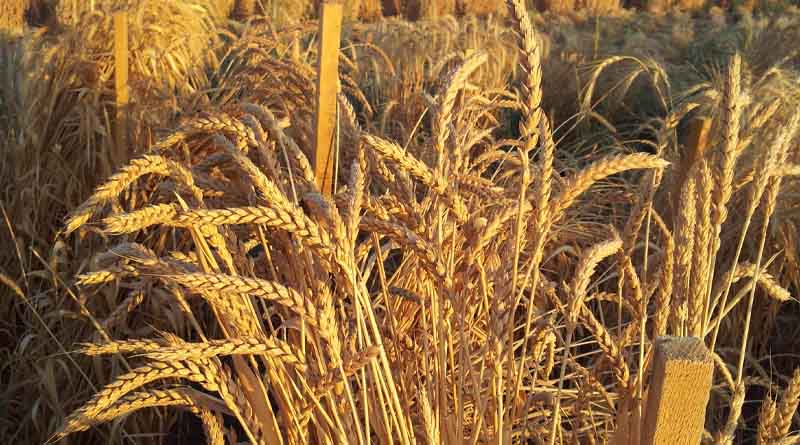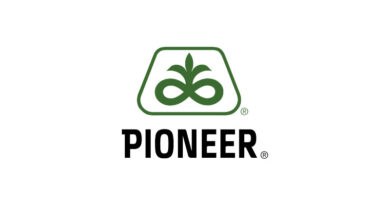Research awards to tackle challenge of fortifying wheat against heat and drought
12 April 2023, Mexico: As part of its crucial mission to accelerate wheat adaptation to rapidly changing climate conditions due to global warming, the Heat and Drought Wheat Improvement Consortium (HeDWIC) with the support of the Foundation for Food & Agriculture Research (FFAR) has granted 10 awards since 2021, crowdsourcing innovative research from around the world.
Like other crops, wheat – which makes up 20 percent of the human diet – is affected by threats to the global food system from persistent population growth and economic and climate pressures. These challenges are further exacerbated by the fallout from the COVID-19 pandemic and the war in Ukraine. There is an urgent need to prioritize climate resilient wheat varieties to protect this food staple.
Some five years after HeDWIC was launched in 2014 to incorporate the most advanced research technologies into improving heat and drought tolerance of wheat, the Intergovernmental Panel on Climate Change reported that climate change was having an impact on food security through increasing temperatures, changing precipitation patterns and greater frequency of extreme weather events in its Special Report on Climate Change and Land.
“While some areas are becoming more conducive to wheat growing, crop yields are suffering in other regions around the world traditionally known as bread baskets,” said wheat physiologist Matthew Reynolds, who leads HeDWIC at the International Maize and Wheat Improvement Center (CIMMYT).
“Wheat is one of our fundamental crops, and we must spare no effort in protecting it from current and future challenges,” said Saharah Moon Chapotin, FFAR executive director. “Global collaborations are necessary to address global concerns, and these grants are bringing together international teams to share and build the science and research that will ensure the stability of this crop.”
The 10 recipient projects are under the umbrella of the HeDWIC project Harnessing Translational Research Across a Global Wheat Improvement Network for Climate Resilience, funded by FFAR. The first five awardee projects were identified in 2021, and an additional five projects were awarded in 2022.
To boost new ideas in “climate-proofing” crops, HeDWIC conducts virtual meetings that include all awarded research teams to take advantage of the collective global expertise in heat and drought resilience, leading to cross-pollination of ideas and further leverage of resources and capabilities.
In March, Reynolds led in-person discussions with some of the collaborating researchers at CIMMYT’s experimental research station on the outskirts of Ciudad Obregon, a city in Mexico’s Sonoran Desert, during CIMMYT’s annual Visitors’ Week.
Projects awarded in 2022
- Exploring the potential of chlorophyll fluorescence for the early detection of drought and heat stress in wheat (FluoSense4Wheat)
“The HeDWIC mini proposal allows us to explore the potential of chlorophyll fluorescence for the early detection of drought and heat stress in wheat. The controlled irrigation conditions for wheat grown in Obregon give us the opportunity to quantify photosynthesis by fluorescence while drought develops. Detecting a drought-specific fluorescence response and/or the interaction between active and passive fluorescence is relevant for breeding selecting purposes as well as large spatial scale detection of drought by monitoring the plant.” – Onno Muller, Forschungszentrum Jülich, Institute of Bio- and Geosciences, Germany
- Physiological basis of amelioration of heat stress through nitrogen management in wheat
“Heat stress during grain filling can restrict the availability of carbohydrates needed for grain development. India has been experiencing sudden spikes in both minimum and maximum temperatures by 3 to 5 degrees above normal from late-February onwards, which is an important time for wheat grain-filling and has resulted in declining wheat productivity. Our team is examining the ability of pre-flowering nitrogen applications to support biomass accumulation and overcome the grain-filling source (carbohydrate) limitation during heat spikes. If successful, the results could have broad-reaching benefits given that farmers are familiar with and well-skilled in using nitrogen applications regimes in crop management.” – Renu Pandey, Division of Plant Physiology, Indian Agricultural Research Institute
- Can reproductive development be protected from heat stress by the trehalose 6-phosphate pathway?
“The HeDWIC funding provides a unique opportunity to test how the regulatory sugar, trehalose 6-phosphate (T6P) can protect wheat yields against increasingly common chronic and acute heat stress events. We have already shown that T6P spray increases wheat yields significantly in field conditions under a range of rainfall in wet and dry years. With increasing likelihood of heat stress events in the years ahead, in unique facilities at CIMMYT, we will test the potential of T6P to protect reproductive development from catastrophic yield loss due to chronic and acute heat.” – Matthew Paul, Rothamsted Research, UK
- Investigating tolerance of heat resilient wheat germplasm to drought
“Over the last decade, we have developed heat tolerant wheat germplasm at the University of Sydney that maintains yield under terminal heat stress. In our new HeDWIC project, this material will be tested under combined drought and heat stress under field conditions. This will provide plant breeders with highly valuable information on field tested germplasm for use in accelerated breeding programs targeting combined heat and drought tolerance. The work is critical for future food security considering the inextricable link between temperature and plant water demand, and the increased frequency and intensity of heat and drought events under projected climate change.” – William Salter, University of Sydney, Australia
- Novel wheat architecture alleles to optimize biomass under drought
“Wheat Rht-1 dwarfing genes were an essential component that led to spectacular increases in grain yields during the Green Revolution. Although Rht1 and Rht2 are still used widely in wheat breeding 50 years after they were introduced, they are suboptimal under drought conditions and are often associated with a yield penalty. Using a more extensive range of Rht-1 dwarfing alleles that were developed at Rothamsted, we will introduce them into CIMMYT germplasm to optimize biomass and ultimately increase grain yields under drought stress.” – Steve Thomas, Rothamsted Research, UK
Additional comments from 2021 awardees
“This opportunity has enabled the collection of significant amounts of data that will contribute to the advancement of knowledge in crop physiology and root biology. It has also provided early career researchers with opportunities to gain hands-on experience, develop important skills, and grow their networks. Additionally, this initiative has stimulated further ideas and collaborations among researchers, fostering a culture of innovation and cooperation that is essential for progress.” – Hannah Schneider, Wageningen University & Research, Netherlands
“The project is a unique opportunity for research groups from around the world to coordinate efforts on identifying ways to improve heat tolerance of wheat.” – Owen Atkin, Australian National University, Australia
“It is important to understand how high temperature limits crop growth and yield and to identify genetic variation that can be used for breeding climate resilient crops. This project has already begun to develop new methods for rapidly screening growth and physiological processes in genetically diverse panels which we hope will be invaluable to researchers and breeders.” – Erik Murchie, University of Nottingham, UK
“This project will provide novel phenotyping screens and germplasm to breeders and lay the groundwork for genetic analysis and marker development.” – John Foulkes, University of Nottingham, UK
(For Latest Agriculture News & Updates, follow Krishak Jagat on Google News)















